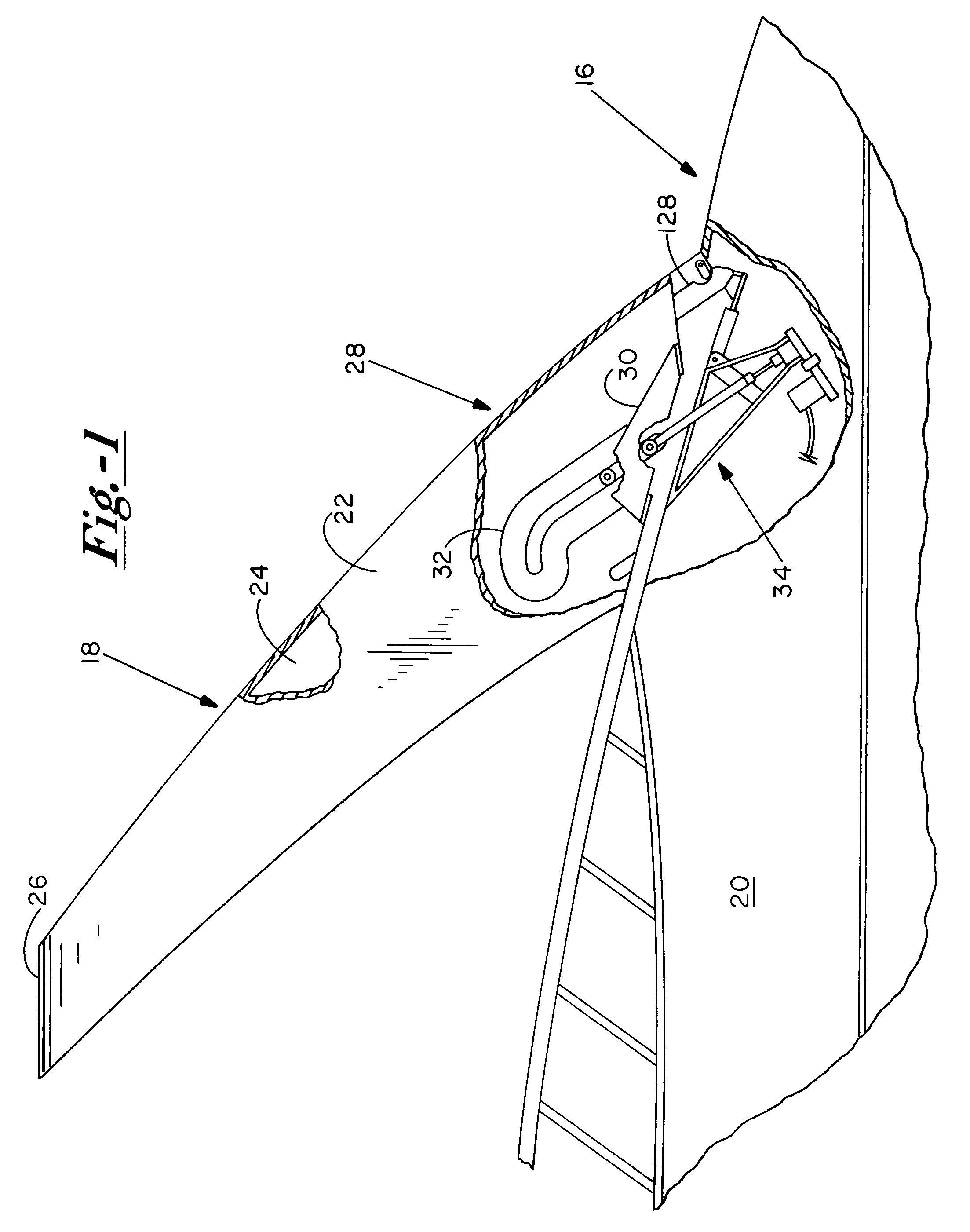Moving mechanism for cruiser arch
- Summary
- Abstract
- Description
- Claims
- Application Information
AI Technical Summary
Benefits of technology
Problems solved by technology
Method used
Image
Examples
Embodiment Construction
[0041]Turning now to the drawings, there is shown FIG. 1 a cruiser 16 and a cruiser arch 18 mounted movable to a hull 20 of the cruiser between a working position as shown, and a clearance position (FIG. 12) in which the arch is lowered to provide improved overhead clearance. In the working position, arch 18 supports radar antennas, radio antennas, and other electrical equipment (not shown) for normal use.
[0042]Arch 18 includes opposite legs 22 and 24 that are generally upright in the working position, although somewhat forwardly inclined. The opposite legs are joined by a horizontal transom or cross member 26.
[0043]Portions of leg 22 and hull 20 near the gunwale are broken away to reveal an arch moving and controlling mechanism 28. Mechanism 28 is housed within recesses formed in leg 22 and hull 20, and thus is concealed from view when arch 18 is in the working position. The major components of mechanism 28 include a carriage 30 integrally mounted to leg 22, a carriage guide 32 mou...
PUM
 Login to View More
Login to View More Abstract
Description
Claims
Application Information
 Login to View More
Login to View More - R&D
- Intellectual Property
- Life Sciences
- Materials
- Tech Scout
- Unparalleled Data Quality
- Higher Quality Content
- 60% Fewer Hallucinations
Browse by: Latest US Patents, China's latest patents, Technical Efficacy Thesaurus, Application Domain, Technology Topic, Popular Technical Reports.
© 2025 PatSnap. All rights reserved.Legal|Privacy policy|Modern Slavery Act Transparency Statement|Sitemap|About US| Contact US: help@patsnap.com



